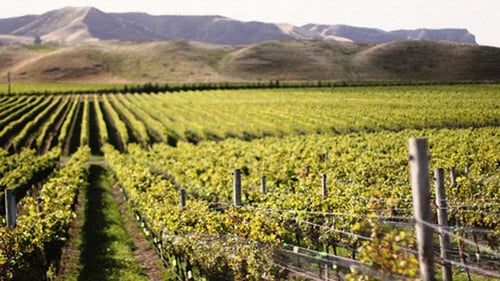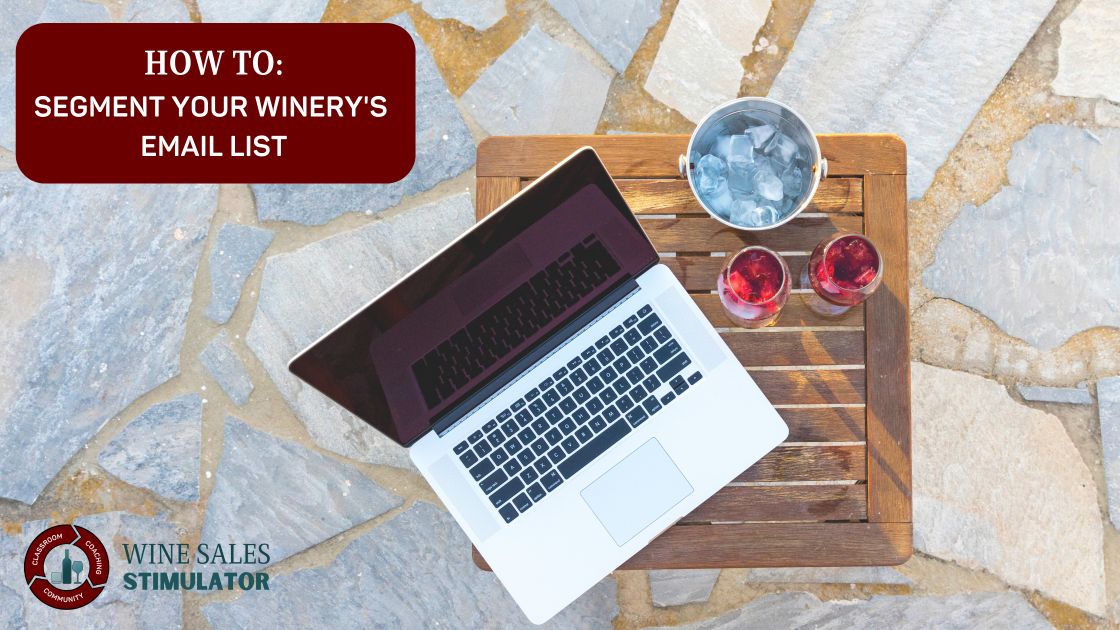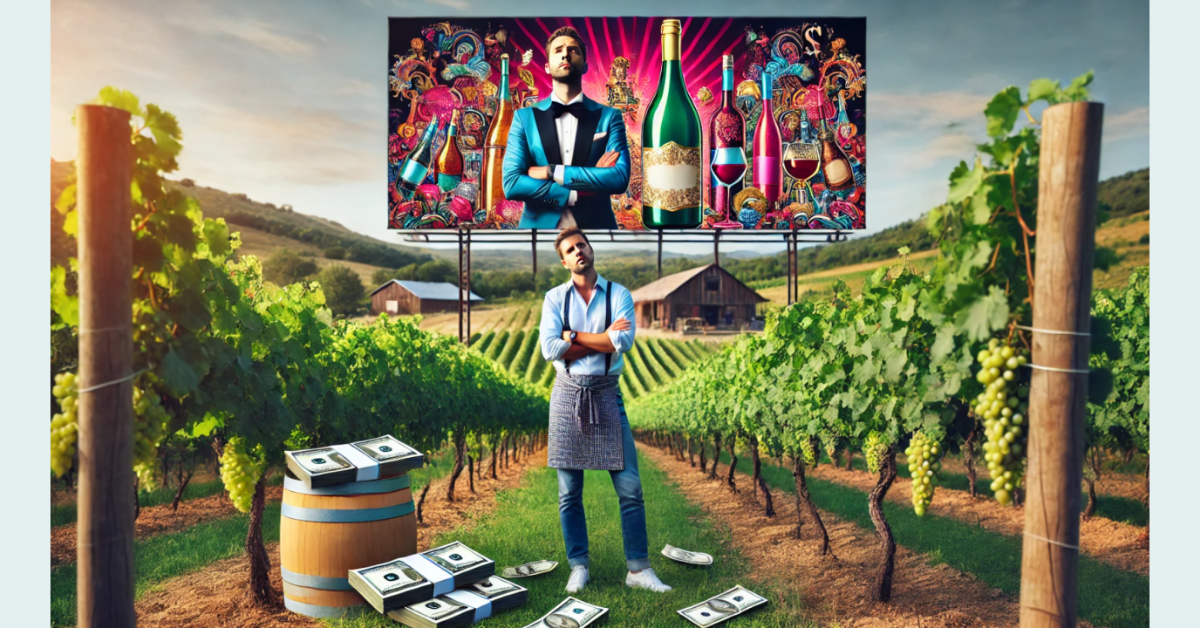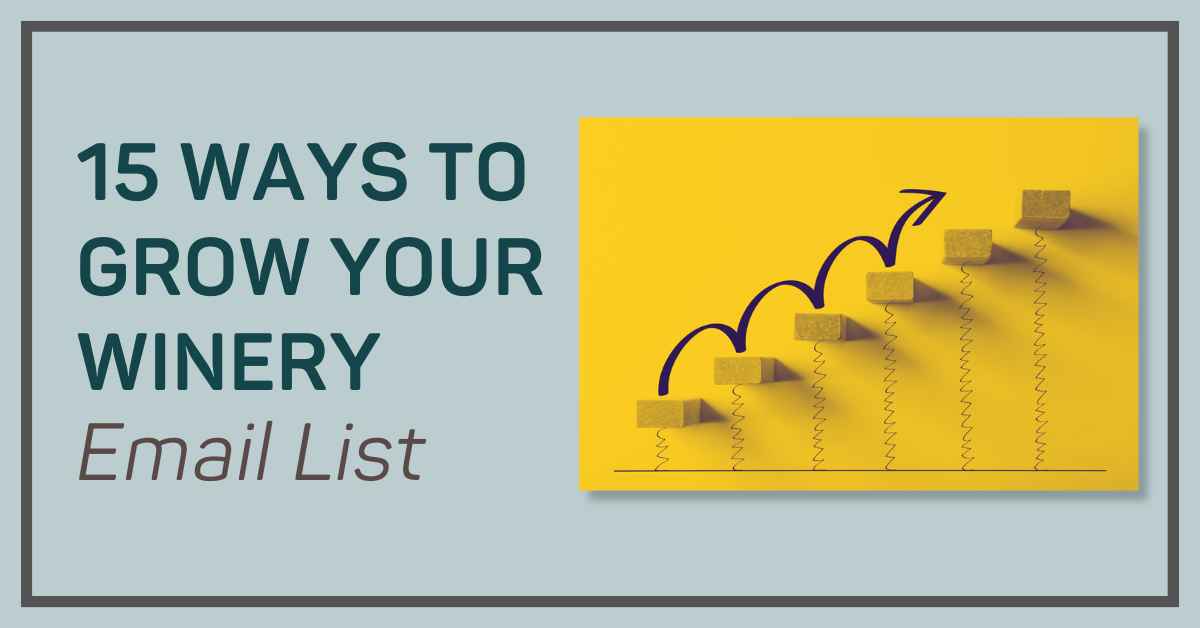How to Segment Your Winery's Email List to Send Targeted Campaigns
When it comes to selling beyond your tasting room, a solid email marketing strategy for wineries is gold! It is not just about how many subscribers...
Wine email marketing holds the biggest bang for the buck of any sales & marketing strategy but so few wineries and distilleries are leveraging it like they should. A big reason for this is when most people think of email marketing, they think of “newsletters” and “blasts.”
If you want to sell wine online and beyond your tasting room, email is your ticket to success!
Let me cut right to the chase. Here are the reasons why email should be your top priority when it comes to various ways to market and sell your wine or spirits:
There are many more reasons but, hopefully, by now I have your attention.
Newsletters are a relic from the early days of email marketing. Most wineries and distilleries still use them because they do not know what else to do!
“Modern” email marketing goes way beyond newsletters! For a deep dive, please check out this webinar called, “The Anti Newsletter Email Strategy.”
There is nothing inherently wrong with creating and distributing newsletters, but you would be wise to limit the distribution of it to those who regularly open it.
You should have multiple places on your website for visitors to join your mailing list. It is critical that you require as few fields as possible (first name and email address is best). There will be plenty of time later to obtain things like last name, birthday, and zip code. For now, you want to make the signup process as frictionless as possible.
You also need to provide compelling reasons to sign up for your list. You have to spell it out for people. For example, promise not to send too many emails, tell people they can unsubscribe at any time, and maybe provide some kind of new-subscriber discount on their first order. It is also wise to share specifics of what kind of content they can expect to receive.
Another great strategy is to use pop ups. There are two best practices to keep in mind when using them: a) wait 15 seconds after a visitor lands on your website to show the pop-up and b) only show the pop-up to NEW visitors.
Segmentation is key to getting higher open rates and more engagement. When people complain about email, what they are really displeased with is UNWELCOME emails! To combat this, your lists of email subscribers should be highly segmented.
I believe you can never have too many segments. Depending on the software you use, this is done via “lists” or “tags.” A few examples of segments are:
You can then send highly targeted emails to these segments to tailor the messaging and offer to those who you KNOW are interested. You can send varietal specific emails to those segmented with the varietal tag and I'm sure the open rate and engagement email will be much larger than sending to those who aren't interested in that varietal.
The idea here is to avoid a one-size-fits-all approach to communicating via email. Once you start tailoring your email correspondence for specific audiences, you will see your open rates soar. In fact, open rates are your “report card” for how well you are communicating with your subscribers.
And this goes well beyond inserting someone’s name into the greeting. Personalized emails check many boxes including the way you speak. This is the big problem with newsletters. It looks and feels like the winery is writing to a large group of people instead of communicating directly with one person. When you write your emails, if you’ve done a good job with segmentation, you can be free to talk “one-on-one” with subscribers.
When I sit down to write an email, I think of one of my subscribers - someone I know - and I write as if I’m writing just to that one person. I know this works well because I often get a reply! As you get better and better at writing in a highly personalized way, you will start getting replies, too. I think it is the surest sign that your email marketing is working like it should. It’s all about building one-to-one relationships at scale.
One of my very favorite things about modern wine email marketing is the unlimited ways you can leverage automations. “Leverage” is a great word because it means a little effort in just the right spot can move mountains.
So, let’s talk specifics. One of the first automations every winery or distillery should set up is an automated welcome email. When someone signs up to be on any of your email lists, they should immediately and automatically receive a welcome email. This welcome email should be very brief and have a spirit of “let me show you around.” Give them the cook’s tour (digitally). The welcome email is no place to try to sell something to the new subscriber. That will come later. The only exception is to perhaps offer a 10-15% discount on their first order. Always a “welcome” surprise!
Another key automation to set up is what is called a “nurture sequence.” Let’s say someone downloads a recipe from your website. The automation should enroll them in a sequence of 3-5 emails that fire off every 3-4 days or so. The first few of these nurturing emails should offer more free content similar to what they already showed you they wanted. Wait until the 3rd of 4th email to then put some kind of offer in front of them. We like to suggest a Jab, Jab, Jab, Right Hook approach.
Before long, you will think of other ways to use automation as a “silent salesperson” artfully pulling prospects through your automated marketing funnel.
It is very easy to get caught up in vanity metrics such as total number of subscribers and new subscribers, but if you really want your email marketing to pay dividends and return a healthy ROI, you have to diligently maintain your list.
The first thing to consider is regularly purging all inactive (unengaged) subscribers. This can even be automated. Again, your open rates are your primary report card. If your open rates start to slip, the first place to look when troubleshooting is your “cold subscribers” list. The best email marketing software solutions provide easy ways to identify the subscribers on your list who are simply not engaged. Very often, a simple “do you want to keep getting our emails” email will do the trick.
While we are on the subject of cold subscribers, you need to be OK with making it easy for people to unsubscribe or modify their preferences so they have more control of the types of emails they receive.
Another critical aspect of email list hygiene is the best practice of frequent testing. Most modern email software tools offer A/B split testing on subject lines, CTA buttons, and other components of your email campaigns. Believe it or not, this can make a huge difference in both engagement and growth of your email list.

Once you let go of the notion that email is mostly newsletters and blasts, you can really unleash the power of email marketing.
Practicing the tips provided in this post will help you take your customer engagement (and conversions) to the next level.
But what you’ve learned here is just the tip of the iceberg. If you want to accelerate your use of email marketing, we invite you to explore our new group coaching program called Wine Sales Simulator. If you own a distillery, this program works for you, too. In fact, a full ⅓ of our members are distillery owners!
And, as always, I am happy to answer any questions you have. There is a place below this post for you to do just that!
You may also want to check out this article from Barrels Ahead called, "Modern Ways to Effectively Sell and Market Wines in the US " which came about from a recent podcast interview.
To learn more about email marketing for your winery or distillery, download our FREE Checklist below that will help you implement these strategies to transform your email strategy. The checklist also contains other marketing tips to help you accelerate your online wine sales!

When it comes to selling beyond your tasting room, a solid email marketing strategy for wineries is gold! It is not just about how many subscribers...

Strategic spending is crucial in the wine industry, as it can significantly advance the sales of your wine or spirits.

In this video, wine sales & marketing expert, Ben Salisbury, speaks directly to winery owners and distillery owners about the 15 different strategies...